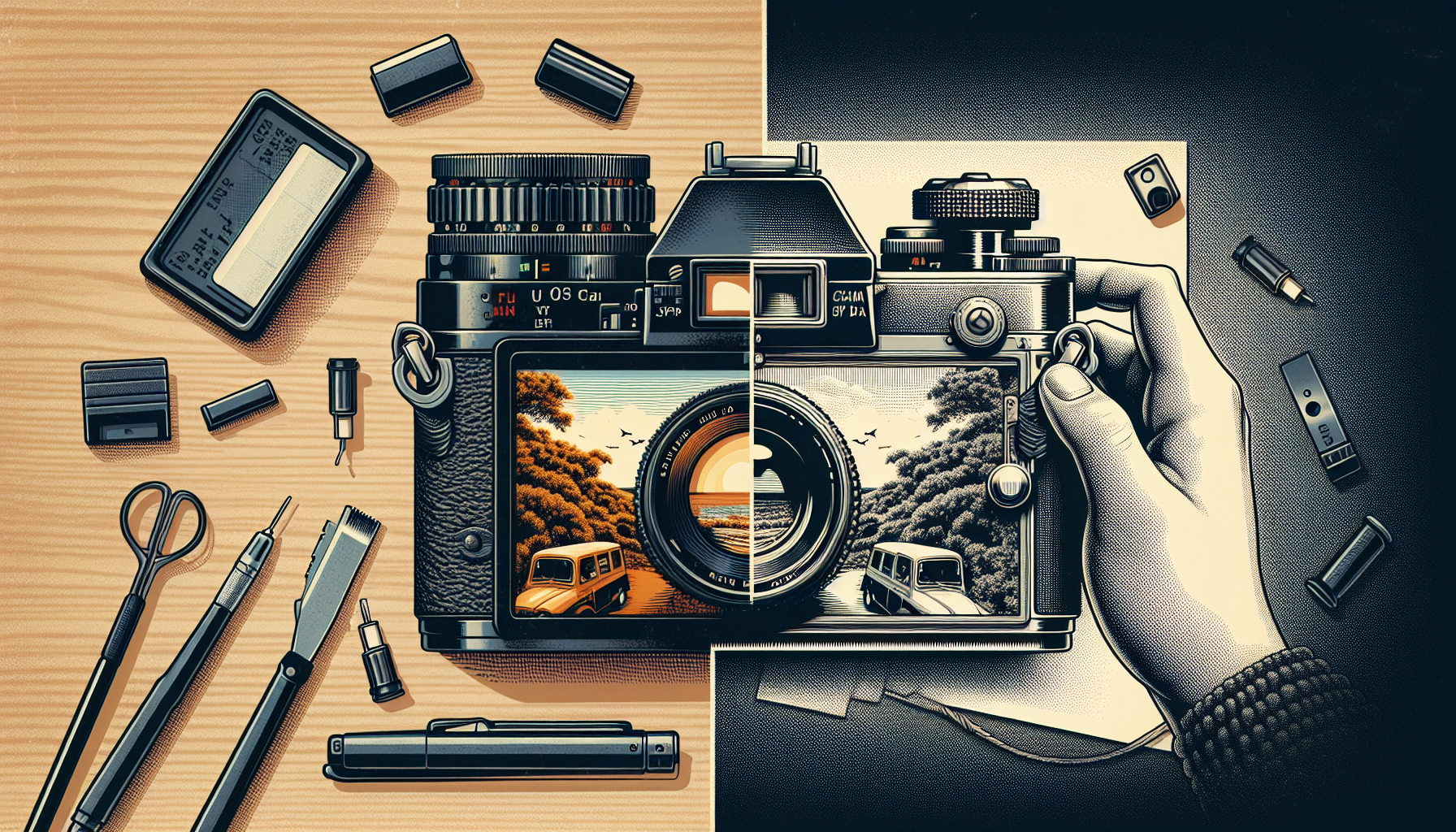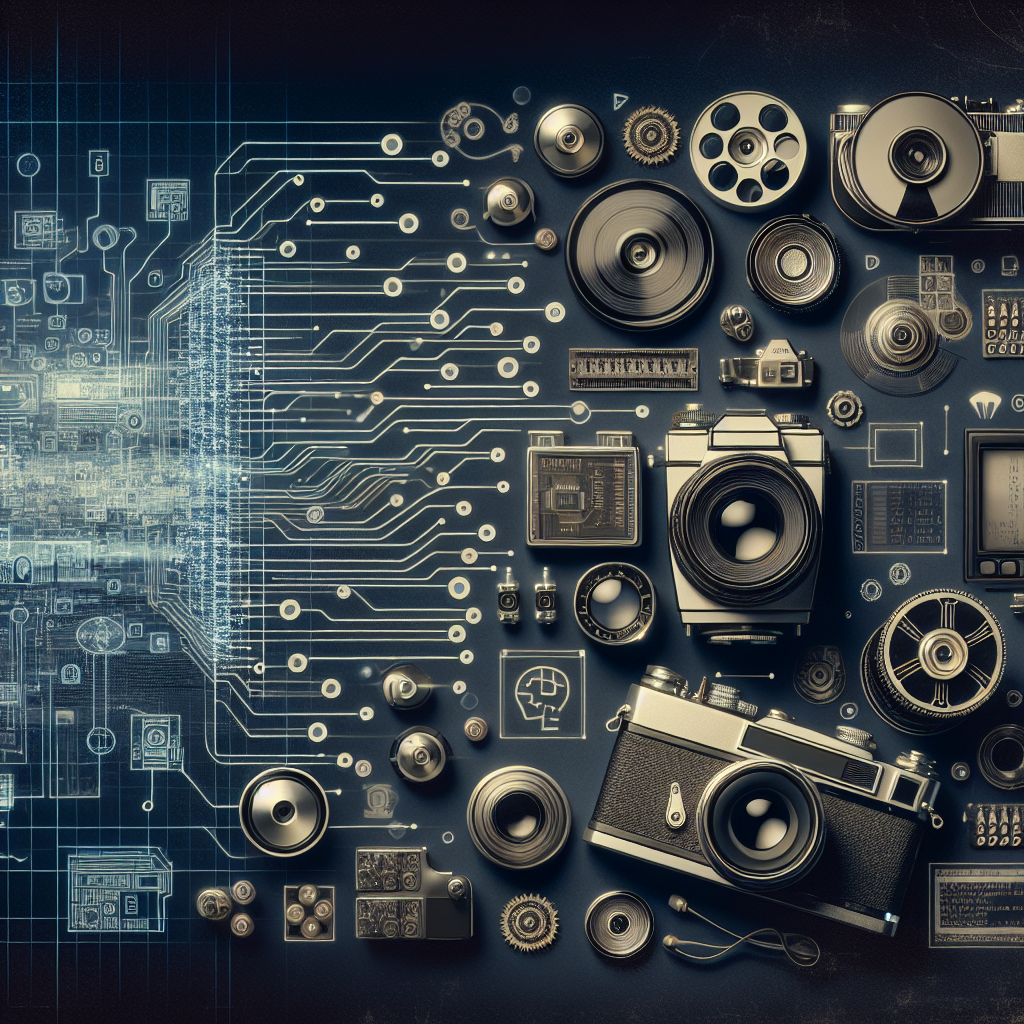Fujifilm X Half: When Digital Embraces Analog - The Future of Nostalgic Photography
In an era where most camera manufacturers are racing to pack more megapixels, faster processors, and AI-powered features into their devices, Fujifilm has taken a refreshingly different approach with their latest release. The new Fujifilm X Half, announced on May 22, 2025, deliberately steps back from the raw processing power race to deliver something that photography enthusiasts might find more meaningful: an authentic analog experience in a digital form factor.
At Binbash Consulting, we're always fascinated by technology that bridges the gap between digital innovation and human experience. The X Half represents exactly this kind of thoughtful engineering - where technical choices are made not just for specs' sake, but to create a particular user experience.
The X Half: A Digital Camera with an Analog Soul
The Fujifilm X Half draws inspiration from traditional half-frame film cameras, which were popular for their economy (fitting twice as many photos on a roll of film) and distinctive vertical framing. What makes this camera particularly interesting from a technical perspective is how Fujifilm has deliberately limited certain digital capabilities to stay true to the analog experience.
Most notably, the X Half doesn't support RAW image capture - a decision that would be considered sacrilegious by many modern photographers. Instead, the camera outputs only JPEGs with Fujifilm's film simulations baked in. This means that images come directly out of the camera with a specific look, similar to how film photographers would choose a particular film stock for its distinctive characteristics.

The hardware design reinforces this commitment to the analog experience. The X Half features:
- A 1-inch-type sensor (larger than most compact cameras but smaller than APS-C)
- A vertical-oriented viewfinder reminiscent of half-frame film cameras
- Two small screens, with one dedicated entirely to film simulation selection
- Physical controls for essential photography parameters
- A fixed lens, eliminating the complexity of interchangeable lens systems
This design philosophy represents a fascinating counter-trend in digital technology. Rather than maximizing flexibility and post-processing options, Fujifilm has deliberately constrained certain aspects of the camera to create a more focused, intentional shooting experience.
The Technical Implications of Going "JPEG-Only"
From a technical standpoint, the decision to omit RAW capture has several implications. RAW files contain unprocessed data directly from the camera's sensor, allowing photographers to make significant adjustments to exposure, white balance, and other parameters in post-processing without degradation.
By contrast, JPEGs are processed in-camera according to certain parameters, with the results "baked in" and some data discarded for compression. This means:
- Less flexibility in post-processing for technical corrections
- Smaller file sizes and reduced storage requirements
- Faster workflow with no need for RAW conversion
- Immediate usability of images straight from the camera
- A more decisive approach to photography where getting it right "in camera" matters
For Fujifilm, this decision aligns with their long-standing emphasis on their film simulations - digital processing algorithms that recreate the look of classic film stocks like Velvia, Acros, and Classic Chrome. These aren't simple filters but sophisticated processing chains that consider color science, tone curves, and grain structure.
The dedicated screen for film simulation selection further emphasizes this approach. Rather than treating these as post-processing options, Fujifilm positions them as fundamental creative choices, similar to how film photographers would select a specific film stock before loading their camera.
The Broader Industry Context: Digital Nostalgia and Intentional Computing
The X Half isn't emerging in isolation. It's part of a broader trend we're seeing across technology sectors: a renewed appreciation for constraints and intentionality in digital tools. This movement includes:
- The resurgence of vinyl records and analog audio equipment
- E-ink devices that deliberately limit functionality to improve focus
- Mechanical keyboards that emphasize tactile feedback over minimalism
- Software that imposes creative constraints (like apps that limit editing options)
From a technical perspective, these products represent a mature approach to digital technology - one that recognizes that "more" isn't always "better" and that thoughtful limitations can actually enhance the user experience rather than detract from it.
The Fujifilm X Half fits squarely into this category. By removing RAW capture and emphasizing film simulations, it's encouraging photographers to make deliberate choices at the moment of capture rather than deferring decisions to post-processing.
User Experience Design Lessons from the X Half
There are valuable lessons here for software designers and developers. The X Half demonstrates how thoughtful constraints can create a more engaging, satisfying user experience. This approach runs counter to the common software development pattern of adding more features with each release, resulting in bloated applications that try to please everyone but delight no one.
Instead, the X Half embraces a philosophy more aligned with the Unix principle: "Do one thing and do it well." It's not trying to be the most versatile camera or appeal to every type of photographer. It's specifically designed for photographers who value the aesthetic and discipline of film photography without the logistics of developing actual film.

This philosophy aligns with best practices in modern application development:
- Focus on core user needs rather than feature checklists
- Create opinionated tools that guide users toward good outcomes
- Recognize that constraints can spark creativity rather than limit it
- Design for specific use cases rather than trying to be all things to all users
The Technical Balance: Nostalgia Without Sacrifice
It's worth noting that while the X Half embraces certain analog limitations, it doesn't abandon all the benefits of digital technology. It still offers:
- Immediate feedback through its digital viewfinder and screens
- Storage capacity for thousands of images
- Freedom from film development costs and chemical processes
- The ability to share images instantly via wireless connectivity
This represents a thoughtful balance between nostalgic experience and modern convenience - something that many technology products aim for but few achieve successfully.
The X Half isn't simply recreating the limitations of film for their own sake; it's selectively incorporating constraints that enhance the creative experience while quietly eliminating pain points that don't add value (like having to wait days to see your photos).
Implications for Binbash Clients and Technology Leaders
For our clients at Binbash Consulting, the Fujifilm X Half offers several thought-provoking parallels to enterprise technology strategies:
1. Feature curation over feature accumulation: Just as Fujifilm carefully selected which digital capabilities to include and which to omit, organizations should regularly evaluate whether their technical capabilities truly serve business objectives. Not every feature that can be added should be added.
2. User experience as a technical priority: The X Half demonstrates that technical decisions (like omitting RAW support) should be evaluated not just on technical merit but on how they shape the user experience. Similarly, enterprise technology choices should consider the human impact, not just the technical specifications.
3. Intentional constraints as productivity enhancers: By limiting post-processing options, the X Half encourages more thoughtful capture. Similarly, strategic technical constraints in enterprise environments (like standardized development environments or opinionated frameworks) can actually enhance productivity by reducing decision fatigue and creating clearer pathways to success.
4. Balancing innovation with heritage: Fujifilm has found success by innovating within a framework that respects photography traditions. Organizations can similarly benefit from identifying which legacy approaches contain enduring wisdom and which truly need disruption.
Conclusion: The Value of Intentional Technology
The Fujifilm X Half is more than just another digital camera - it's a statement about intentional technology design. By deliberately omitting capabilities that most would consider standard (like RAW capture) and emphasizing constraints that enhance a specific type of creative experience, Fujifilm has created a product that stands apart in an increasingly homogenous market.
For those of us involved in building and implementing technology solutions, the X Half serves as a reminder that the best technology isn't always the most powerful or feature-rich. Sometimes, the most impactful tools are those that are thoughtfully constrained to serve a specific purpose exceptionally well.
At Binbash Consulting, we continue to advocate for this kind of intentional approach to technology - one that values purpose, user experience, and appropriate constraints alongside raw technical capability. In both photography and enterprise technology, sometimes less truly is more.

